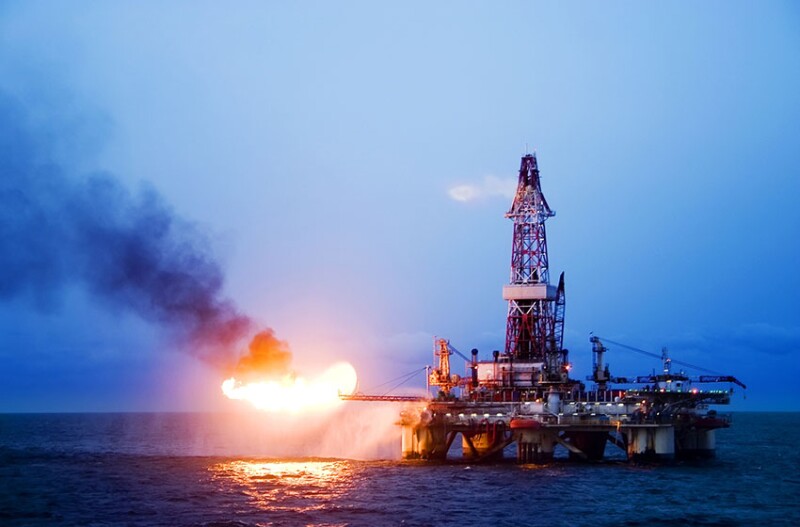Most of the largest oil and gas companies, along with many service providers, have set their sights on achieving net-zero Scope 1 emissions within the next 15 to 20 years. But when it comes to executing this ambition, the industry faces a simple but intimidating question: Where to begin?
Greenhouse gases (GHGs) are woven into every stage of a well’s life which presents challenges that demand creative solutions that do not require too much capital.
At the 2024 Abu Dhabi International Petroleum Conference (ADIPEC), a global lineup of operators and service providers shared their answers.
More than a dozen technical papers on the topic of decarbonizing operations showed that tackling Scope 1 emissions—those that come directly from the extraction and production process—requires both technological ingenuity and a willingness to rethink longstanding practices.
Houston area-based Canrig Technologies has developed a utility power module that allows any rig—not only the ones it owns—to tap into grid power.
The innovation, outlined in SPE 221820, can cut emissions by an average of 20 metric tons of CO₂e per day when paired with LED overhead lighting. And in regions where grid power is cheapest, the subsidiary of Nabors Industries said the new module helps save up to 70% on fuel costs compared with running generators that guzzle 2,000 gal/D of diesel.
Canrig isn’t alone in its effort to tamp down on drilling emissions.
Rival drilling contractor Helmerich & Payne (H&P) presented its own solution at the conference in SPE 221821. Tulsa, Oklahoma-based H&P’s study showed fumigated dual-fuel engines that burn a mix of natural gas and diesel can slash rig emissions by 50% when compared with traditional generators.
Yet, there is a tradeoff, which is why H&P’s engineers favor port-injected engines, despite offering only an 18% reduction compared to Tier 2 diesel generators. While this is less than half of the emissions drop achievable with the fumigated dual‑fuel engines, H&P said the port-injected variant is the “most balanced approach” when it came to cost and reliability.
The H&P team also found that port-injected engines, while achieving substantial CO₂e reductions, produced slightly more nitrogen oxides (NOx) than a conventional generator.
NOx is not considered a GHG in the industry’s emissions tallies. Still, it’s a critical point to consider since NOx contributes to ozone formation and therefore indirectly fuels global warming. H&P’s authors acknowledged the discrepancy in their paper.
“As a community, when continuously discussing GHG improvements and the cost associated with it, it is important to consider the incentives being signaled to vendors and technology providers,” they wrote about the tradeoffs between lower CO₂e and higher NOx. “Is this the intended signal? There is no clear answer, and this should be an active conversation.”
Cement is often not the first thing that comes to mind in the push for decarbonization, yet the cement industry alone accounts for around 8% of global CO₂ emissions. And as a key ingredient of the well construction process, cement is now getting a hard look.
The Abu Dhabi National Oil Company (ADNOC), in partnership with Halliburton, recently demonstrated how change is possible in this niche area.
As highlighted in SPE 221838, the two companies replaced more than 70% of traditional Portland cement in a particularly challenging section of an offshore well with an alternative material. The result was a 70% reduction in cement-related emissions for that section of the well.
Driven by its own emissions goals and tight regulatory requirements, Shell engineers came up with a new way to simulate the well cleanup and test phase while flaring as little natural gas as possible.
When put into practice, the new methodology achieved an emissions output of just 17.5% of the permitted allowance and 30% of what similar startups typically emitted.
Shell’s authors added that rig time was slashed to 45% of the expected duration for comparable operations—showing that the battle against emissions can yield win-win outcomes. More details on the new Shell methodology can be found in SPE 221841.
Of course, the need to address flaring doesn’t end offshore, and Japanese producer INPEX has an idea: replace traditional flare tips with incinerators.
The company’s study, presented in SPE 221898, zeroes in on small-scale operations, which account for about 40% of the industry’s flaring emissions, and found that incinerators which boast a 99.8% combustion efficiency rate could reduce emissions by 18%.
The impact becomes even more striking when compared to low-efficiency flares—those with a methane combustion rate of around 90%. In such cases, emissions could be cut by more than 40% through the adoption of incinerators.
As these papers demonstrate, eliminating Scope 1 emissions isn’t about a single silver bullet—it’s about doing the detective work to uncover which solutions deliver the biggest impact for the investment.
Technologies like low-carbon cement and high‑efficiency incinerators show promise, but as the industry navigates the early days of this journey, it’s still uncertain which approaches will prove both transformative in reducing operational emissions and scalable across the sector.
For Further Reading
SPE 221898 Case Study: Practical Solutions for Managing Small-Volume Flares in Community Areas: The Installation of an Incinerator by R. Matsuo, Y. Takada, and T. Jeanes, INPEX Corp.
SPE 221838 Decarbonization and Successful Zonal Isolation of a Challenging Well Using a High‑Performance Low-Carbon Emission System Containing Less Than 30% Portland Mass by M. Iskander, A.J.C. De Barros, A.B. De Melo, and M.R. Benberber, ADNOC Offshore; and S. Gupta, N. Aghayarova and P. Manga, Halliburton.
SPE 221821 From Baseline to Breakthrough: Comprehensively Decoding Rig Power Solutions for Sustainability and Scalability by S. Auld, A. Wood, J. Brady, and S. Kern, Helmerich & Payne.
SPE 221820 Operations Reduce Scope One Emissions Through Rig Electrification and Energy-Efficient Lighting by B. Landry, C. Stopkoski, and B. Norton, Canrig Technologies.
SPE 221841 Well Clean-Up and Testing: Using Dynamic Simulations to Minimise Flaring Emissions and Optimise Well Testing by J.H. Ellepola, Shell Markets, Middle East, Ltd.; S.E. Scott, Shell UK Ltd.; and M. Kerem, Shell Global Solutions International B.V.


